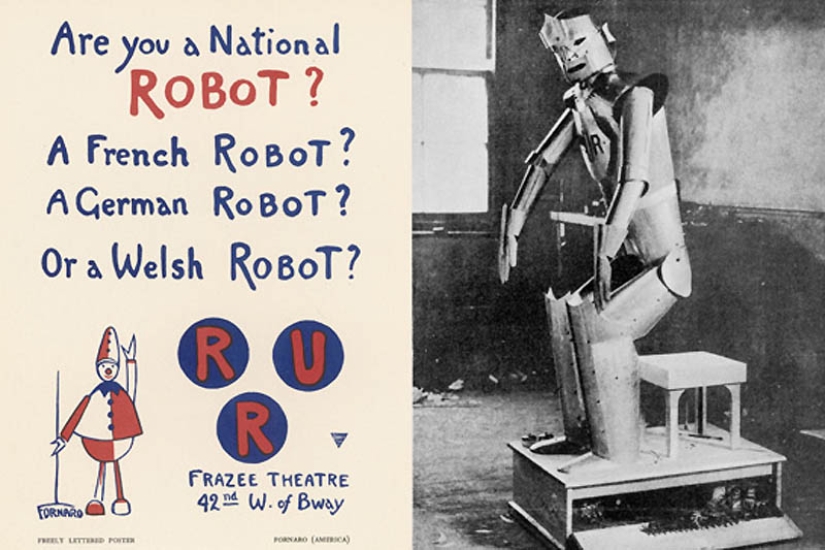15 sci-fi predictions that came true in real life
Categories: Science
By Pictolic https://pictolic.com/article/15-sci-fi-predictions-that-came-true-in-real-life.htmlMany of us read science fiction stories as children and found it hard to believe that much of them could be real. It took quite a bit of time, and what then seemed to us a fantasy, became a reality.
(Total 15 photos)


1. Space rockets
In Jules Verne's book From the Earth to the Moon, published in 1865, one could read about lunar modules, solar sails, and landing a man on the moon. A hundred years later, these "predictions" of the famous science fiction writer became true.

2. Satellites
Science fiction writer Arthur C. Clarke, in his book A World Without Wires, “introduced” them into our world decades before the advent of satellites. In his opinion, any advanced technology is indistinguishable from magic.

3. Submarines
In 1870, another very popular book by Jules Verne, 20,000 Leagues Under the Sea, saw the light of day. At that time, submarines already existed, driven by human power. Verne came up with the Nautilus, which became the inspiration for modern ballistic submarines with an independent propulsion system. Captain Nemo's portable diving system in Verne's novel was a prototype of an aqualung.

4. Water mattresses
The first mention of water mattresses is found in Robert Heinlein's 1961 book Stranger in a Strange Land. The first water bed appeared seven years after the book was published.

5. Invisibility
In 1897, one of HG Wells' science fiction novels, The Invisible Man, was published. Today, stealth planes have been invented that are invisible to radar, metamaterial camouflage is a substance that can bend part of the light spectrum around itself, remaining invisible to the surrounding eye. According to rumors, there are invisible tanks. However, due to its military importance, such information is strictly classified.

6. Flying cars
In many fantastic works, the heroes move in flying cars. Today it is a very real thing. The Terrafugia Transition Roadable Aircraft is the first commercially available flying machine and is expected to cost around $279,000. A flying car can transform from a plane to a car and vice versa.

7. Aliens
In H. G. Wells' 1898 novel The War of the Worlds, we are confronted with a conflict between humans and aliens. The aliens, according to the author's idea, will be killed by a simple bacterium. NASA is planning missions to Mars and Europe today to search for other civilizations. So far, no encounters with alien organisms are known.

8. Cell phones and Bluetooth
"Kirk Enterprise; Enterprise reception" - James Kirk spoke this phrase into the device, today called Bluetooth. The devices used in Star Trek do not differ in the mechanism of operation from modern cell phones, except for the possibility of intergalactic roaming.

9. Beam weapon
The "War of the Worlds" by HG Wells also brought us information about heat rays, with the help of which the aliens destroyed their opponents. Today, some varieties of military lasers shoot down incoming missiles. Sonic cannons like the Long Range Acoustic Device (LRAD) are used by troops guarding the 2012 Olympics.

10. Robots
Karel Capek in 1920, along with the script "Rossum's Universal Robots", gave the world the idea of artificial people, introducing the term "robots". Today, robots are part of our world. While harmless. Take, for example, the Roomba carpet cleaner or the BAE's Taranis unmanned combat aircraft. The robots closest to the appearance of a person are ASIMO, named after Isaac Asimov, who developed the famous "Three Laws of Robotics".

11. Space travel
Today, this type of tourism is gaining momentum. We first learned about him from Stanley Kubrick's 1968 film A Space Odyssey. Passengers with enough finances today can fly to the International Space Station. Private companies accept applications for orbital and sub-orbital flights.

12 Asteroid Apocalypse
Previously, no one was worried about the threat of asteroids. In disaster films such as Armageddon and Deep Impact, we see terrifying scenes. Today, NASA is seriously studying the most dangerous asteroids located close to Earth.

13. Test tube babies and genetic engineering
Aldous Huxley's 1932 novel Brave New World predicted everything we live today. Huxley was able to guess aspects of genetic engineering - test-tube babies, cloning. Also in the "Brave World" there is a mention of drugs of well-being, similar to today's antidepressants.

14. Interactive tablets
It is hard to imagine our daily life today without high-tech devices. E-books, touchscreen phones are our invariable attributes today. In the 1960s, crew members of the Enterprise used a PADD (personal access display device) to access their computers. The Hitchhiker's Guide to the Galaxy (the actual e-guide used in the book) is very much like an iPad with real galactic Wi-Fi access.

15. Total surveillance
Total surveillance, along with other elements of George Orwell's dystopia "1984", is not surprising today. In 2009, the number of security cameras was 1 for every 14 Britons. Website tags and cookies allow you to collect information about your habits and interests. News broadcasts are another proof of the existence of "doctors of truth", who assure us that "war is peace, freedom is slavery, and ignorance is strength."
Keywords: Prediction | Fiction
Post News ArticleRecent articles

Among the various spiritual practices popular in our days, there is a very unusual and even scary. What do you think, to give ...

Surprisingly, Adolf Hitler was a passionate admirer of Henry Ford. There was a portrait of the brilliant American in the Fuhrer's ...
Related articles

Have you ever thought about what our life would be like if we chose not the path of technological progress, but unity with nature? ...

We can't accurately predict what will happen in the future. But the creators of "the Simpsons", "Inspector Gadget", "Futurama" and ...

Probably, everyone has heard the legend about 300 Spartans who courageously resisted the numerically superior enemy army until ...

History is full of amazing coincidences that make us look at the chronology of events differently. Imagine that in 1977, when the ...